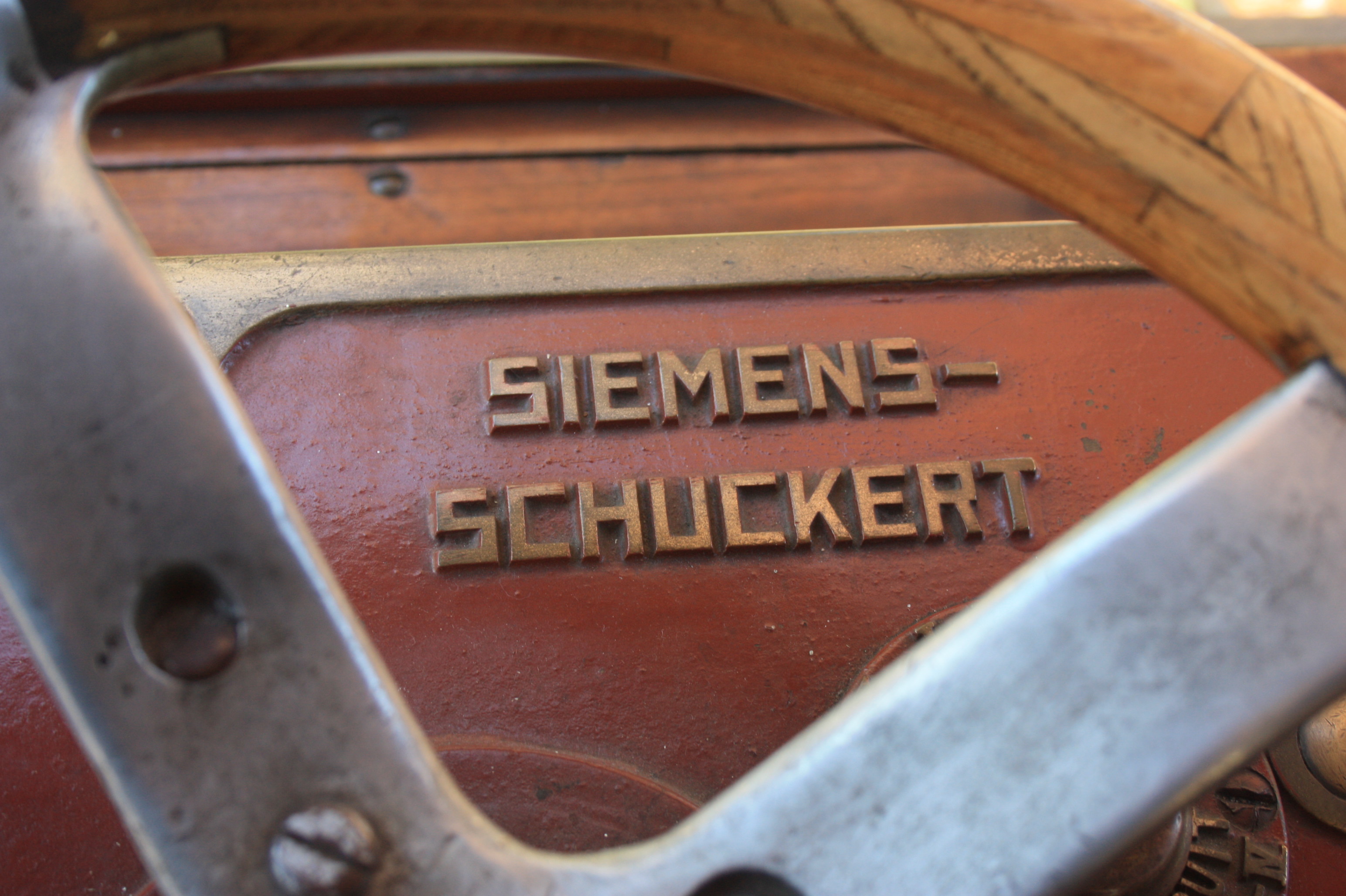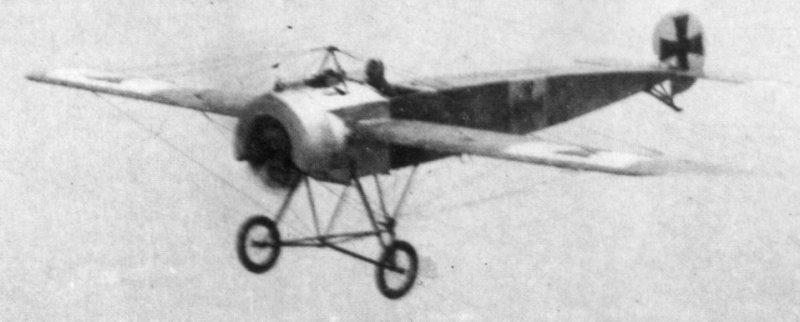|
Oberursel U.I
__NOTOC__ The Oberursel U.I was an early German aircraft engine that powered many German fighter aircraft in the first part of World War I. It was a 9-cylinder air-cooled rotary engine, a licence-built copy of the Gnome DeltaKyrill von Gersdorff, Kurt Grasmann. ''Flugmotoren und Strahltriebwerke'', Bernard & Graefe Verlag, 1981, that Oberursel was producing under licence before the war. It produced 75 kW (100 hp). Applications * AGO DV.3 * Euler D.I * Euler D.II * Feiro Dongó * Fokker D.II * Fokker D.V * Fokker E.II * Fokker E.III * Gotha LD 5 * Pfalz A.II * Pfalz E.II * Pfalz E.III * Pfalz E.VI The Morane-Saulnier H was an early aircraft first flown in France in the months immediately preceding the First World War; it was a single-seat derivative of the successful Morane-Saulnier G with a slightly reduced wingspanTaylor 1989, p.648"The ... * Siemens-Schuckert E.III References {{Oberursel aeroengines 1910s aircraft piston engines Rotary aircraft piston ... [...More Info...] [...Related Items...] OR: [Wikipedia] [Google] [Baidu] |
WikiProject Aircraft
A WikiProject, or Wikiproject, is a Wikimedia movement affinity group for contributors with shared goals. WikiProjects are prevalent within the largest wiki, Wikipedia, and exist to varying degrees within sister projects such as Wiktionary, Wikiquote, Wikidata, and Wikisource. They also exist in different languages, and translation of articles is a form of their collaboration. During the COVID-19 pandemic, CBS News noted the role of Wikipedia's WikiProject Medicine in maintaining the accuracy of articles related to the disease. Another WikiProject that has drawn attention is WikiProject Women Scientists, which was profiled by '' Smithsonian'' for its efforts to improve coverage of women scientists which the profile noted had "helped increase the number of female scientists on Wikipedia from around 1,600 to over 5,000". On Wikipedia Some Wikipedia WikiProjects are substantial enough to engage in cooperative activities with outside organizations relevant to the field at issue. For e ... [...More Info...] [...Related Items...] OR: [Wikipedia] [Google] [Baidu] |
Feiro Dongó
The Feiro Dongó (in English, Feiro Bumblebee) was a Hungarian side-by-side trainer biplane. It was notable for its high aspect ratio wings, aerodynamic clearness and high lift/drag ratio. Design The Feiro Dongó was the second design of Lajos Rotter in his collaboration with the brothers Gyula and László Feigl. Rotter aimed to produce a training aircraft of high aerodynamic refinement with a high lift to drag ratio (L/D) which was also stable but responsive to the controls, structurally strong, easy to land and with a good all-round view from the cockpit. An innovative wing design was a key feature. The Dongó was a biplane with wings of very high aspect ratio and modified elliptical plan, thus minimising induced drag. The upper wing had an aspect ratio of 16.9, very high at the time, and both wings had a root chord of only , though the lower was shorter. Both had thick airfoils. The very narrow wings were claimed to provide longitudinal stability, as the centre of p ... [...More Info...] [...Related Items...] OR: [Wikipedia] [Google] [Baidu] |
Siemens-Schuckert E
Siemens-Schuckert (or Siemens-Schuckertwerke) was a German electrical engineering company headquartered in Berlin, Erlangen and Nuremberg that was incorporated into the Siemens, Siemens AG in 1966. Siemens Schuckert was founded in 1903 when Siemens & Halske acquired Schuckertwerke. Subsequently, Siemens & Halske specialized in communications engineering and Siemens-Schuckert in power engineering and pneumatic instrumentation. During World War I Siemens-Schuckert also produced aircraft. It took over manufacturing of the renowned Protos of Nonnendamm, Protos vehicles in 1908. In World War II, the company had a factory producing aircraft and other parts at Monowitz near Auschwitz. There was a workers camp near the factory known as Bobrek concentration camp. The Siemens Schuckert logo consisted of an S with a smaller S superimposed on the middle with the smaller S rotated left by 45 degrees.Siemens used this as a theme for their logos with absorbed companies: Siemens & Halske's logo ... [...More Info...] [...Related Items...] OR: [Wikipedia] [Google] [Baidu] |
Pfalz E
Pfalz, Pfälzer, or Pfälzisch are German words referring to Palatinate. They may refer to: Places *Pfalz, the Palatinate (region) of Germany **Nordpfalz, the North Palatinate **Vorderpfalz, the Anterior Palatinate **Südpfalz, the South Palatinate **Westpfalz, the West Palatinate *Pfalz, the Palatinate wine region of Germany **Pfälzische Weinkönigin, the Palatine Wine Queen elected representative of the region *the ''Pfalz'', nickname for Pfalzgrafenstein Castle, Germany *Pfälzerwald, the Palatinate Forest *Rheinland-Pfalz, the current federal German state of Rhineland-Palatinate Historic states *''Kurpfalz'', the Electoral Palatinate of the Holy Roman Empire. Historic houses and states include: **Pfalz-Birkenfeld, the House of Palatinate-Birkenfeld ** Pfalz-Birkenfeld-Bischweiler ** Pfalz-Birkenfeld-Gelnhausen ** Pfalz-Birkenfeld-Zweibrücken **Pfalz-Kleeburg ** Pfalz-Landsberg ** Pfalz-Lautern ** Pfalz-Mosbach ** Pfalz-Mosbach-Neumarkt ** Pfalz-Neuburg **Pfalz-Pa ... [...More Info...] [...Related Items...] OR: [Wikipedia] [Google] [Baidu] |
Pfalz A
Pfalz, Pfälzer, or Pfälzisch are German words referring to Palatinate. They may refer to: Places *Pfalz, the Palatinate (region) of Germany **Nordpfalz, the North Palatinate **Vorderpfalz, the Anterior Palatinate **Südpfalz, the South Palatinate **Westpfalz, the West Palatinate *Pfalz, the Palatinate wine region of Germany **Pfälzische Weinkönigin, the Palatine Wine Queen elected representative of the region *the ''Pfalz'', nickname for Pfalzgrafenstein Castle, Germany *Pfälzerwald, the Palatinate Forest *Rheinland-Pfalz, the current federal German state of Rhineland-Palatinate Historic states *''Kurpfalz'', the Electoral Palatinate of the Holy Roman Empire. Historic houses and states include: **Pfalz-Birkenfeld, the House of Palatinate-Birkenfeld ** Pfalz-Birkenfeld-Bischweiler ** Pfalz-Birkenfeld-Gelnhausen ** Pfalz-Birkenfeld-Zweibrücken **Pfalz-Kleeburg ** Pfalz-Landsberg ** Pfalz-Lautern ** Pfalz-Mosbach ** Pfalz-Mosbach-Neumarkt ** Pfalz-Neuburg **Pfalz-Pa ... [...More Info...] [...Related Items...] OR: [Wikipedia] [Google] [Baidu] |
Gotha LD 5
The Gotha LD 5 (for ''Land Doppeldecker'' - "Land Biplane") was a military aircraft produced in Germany during the early part of World War I. Development Developed to the ''Kavallerie Flugzeug'' requirement for light fast scouting aircraft, the LD 5 was used for training and reconnaissance In military operations, reconnaissance or scouting is the exploration of an area by military forces to obtain information about enemy forces, terrain, and other activities. Examples of reconnaissance include patrolling by troops (skirmisher ..., it was a conventional design with two-bay unstaggered wings, tailskid landing gear, and a single open cockpit. Flight tests showed it to be unable to live up to intended reconnaissance duties and so the LD 5 was relegated to being a trainer. The LD 5's short wings also rendered it confined to long runways, but the LD 5 was ordered into modest production despite deficiencies. Operators ; * Luftstreitkrafte Specifications (LD 5) See also R ... [...More Info...] [...Related Items...] OR: [Wikipedia] [Google] [Baidu] |
Fokker E
Fokker was a Dutch aircraft manufacturer named after its founder, Anthony Fokker. The company operated under several different names. It was founded in 1912 in Berlin, Germany, and became famous for its fighter aircraft in World War I. In 1919 the company moved its operations to the Netherlands. During its most successful period in the 1920s and 1930s, it dominated the civil aviation market. Fokker went into bankruptcy in 1996, and its operations were sold to competitors. History Fokker in Germany At age 20, while studying in Germany, Anthony Fokker built his initial aircraft, the ''Spin'' (Spider)—the first Dutch-built plane to fly in his home country. Taking advantage of better opportunities in Germany, he moved to Berlin, where in 1912, he founded his first company, Fokker Aeroplanbau, later moving to the Görries suburb just southwest of Schwerin (at ), where the current company was founded, as Fokker Aviatik GmbH, on 12 February 1912. World War I Fokker capitalized on ... [...More Info...] [...Related Items...] OR: [Wikipedia] [Google] [Baidu] |
Fokker D
Fokker was a Dutch aircraft manufacturer named after its founder, Anthony Fokker. The company operated under several different names. It was founded in 1912 in Berlin, Germany, and became famous for its fighter aircraft in World War I. In 1919 the company moved its operations to the Netherlands. During its most successful period in the 1920s and 1930s, it dominated the civil aviation market. Fokker went into bankruptcy in 1996, and its operations were sold to competitors. History Fokker in Germany At age 20, while studying in Germany, Anthony Fokker built his initial aircraft, the ''Spin'' (Spider)—the first Dutch-built plane to fly in his home country. Taking advantage of better opportunities in Germany, he moved to Berlin, where in 1912, he founded his first company, Fokker Aeroplanbau, later moving to the Görries suburb just southwest of Schwerin (at ), where the current company was founded, as Fokker Aviatik GmbH, on 12 February 1912. World War I Fokker capitalized o ... [...More Info...] [...Related Items...] OR: [Wikipedia] [Google] [Baidu] |
Euler D
Leonhard Euler ( , ; 15 April 170718 September 1783) was a Swiss mathematician, physicist, astronomer, geographer, logician and engineer who founded the studies of graph theory and topology and made pioneering and influential discoveries in many other branches of mathematics such as analytic number theory, complex analysis, and infinitesimal calculus. He introduced much of modern mathematical terminology and notation, including the notion of a mathematical function. He is also known for his work in mechanics, fluid dynamics, optics, astronomy and music theory. Euler is held to be one of the greatest mathematicians in history and the greatest of the 18th century. A statement attributed to Pierre-Simon Laplace expresses Euler's influence on mathematics: "Read Euler, read Euler, he is the master of us all." Carl Friedrich Gauss remarked: "The study of Euler's works will remain the best school for the different fields of mathematics, and nothing else can replace it." Euler is also ... [...More Info...] [...Related Items...] OR: [Wikipedia] [Google] [Baidu] |
WikiProject Aircraft/page Content
A WikiProject, or Wikiproject, is a Wikimedia movement affinity group for contributors with shared goals. WikiProjects are prevalent within the largest wiki, Wikipedia, and exist to varying degrees within sister projects such as Wiktionary, Wikiquote, Wikidata, and Wikisource. They also exist in different languages, and translation of articles is a form of their collaboration. During the COVID-19 pandemic, CBS News noted the role of Wikipedia's WikiProject Medicine in maintaining the accuracy of articles related to the disease. Another WikiProject that has drawn attention is WikiProject Women Scientists, which was profiled by '' Smithsonian'' for its efforts to improve coverage of women scientists which the profile noted had "helped increase the number of female scientists on Wikipedia from around 1,600 to over 5,000". On Wikipedia Some Wikipedia WikiProjects are substantial enough to engage in cooperative activities with outside organizations relevant to the field at issue. For e ... [...More Info...] [...Related Items...] OR: [Wikipedia] [Google] [Baidu] |
Rotary Engine
The rotary engine is an early type of internal combustion engine, usually designed with an odd number of cylinders per row in a radial configuration. The engine's crankshaft remained stationary in operation, while the entire crankcase and its attached cylinders rotated around it as a unit. Its main application was in aviation, although it also saw use in a few early motorcycles and automobiles. This type of engine was widely used as an alternative to conventional inline engines (straight or V) during World War I and the years immediately preceding that conflict. It has been described as "a very efficient solution to the problems of power output, weight, and reliability". By the early 1920s, the inherent limitations of this type of engine had rendered it obsolete. Description Distinction between "rotary" and "radial" engines A rotary engine is essentially a standard Otto cycle engine, with cylinders arranged radially around a central crankshaft just like a conventional ra ... [...More Info...] [...Related Items...] OR: [Wikipedia] [Google] [Baidu] |





